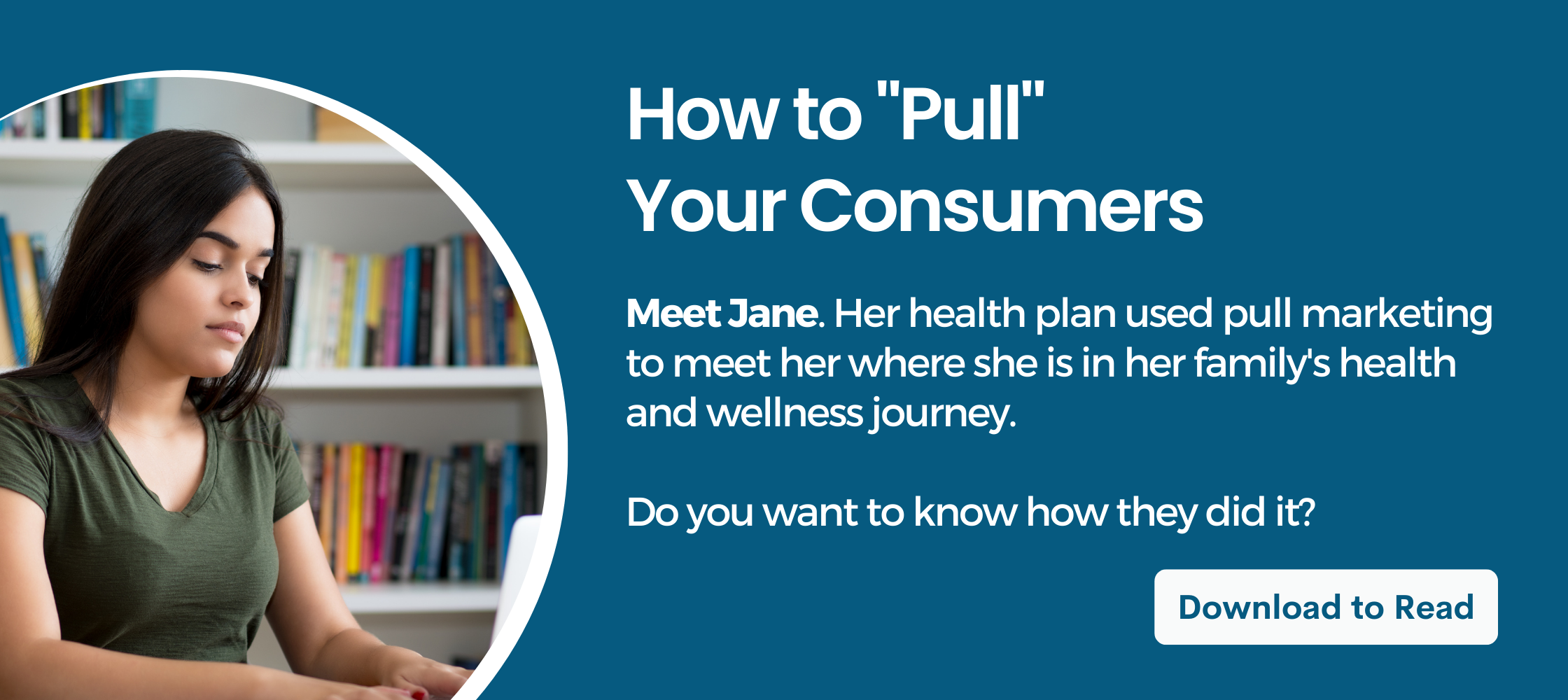Pushing or Pulling your Consumers
In marketing, the terms “push” and “pull” are used to describe different approaches to engaging with consumers. Your last road trip is a good visual metaphor for these two approaches.
Push marketing looks like entering a destination in your favorite navigation app and then following prompts and signs to get from Point A to Point B.
Pull marketing is what happens when you know you want to stop for sushi and search for restaurants near you. Using Yelp or Google, you look at menus, photos, and reviews in order to decide where to stop and eat.
Both are an important part of your trip. Similarly, helping consumers navigate healthcare requires both push and pull.
Push Marketing
Push marketing involves bringing health-related products and services directly to consumers. This can be a mix of advertising, community events, pamphlets in doctor offices, and direct outreach. With this strategy, your health plan’s information is being served in bulk to consumers, whether they asked for it or not.
Due to strict federal regulations, compliance requirements, and national accreditation standards facing health plans, this outreach format tends to be the most common tactic. It can effectively create brand awareness and recognition and therefore has its value and purpose. But it lacks the opportunity to truly connect and get to know consumers.
Read what we have to say about Persona vs Person-centered Marketing.
Pull Marketing
Pull marketing focuses on creating an enjoyable and meaningful consumer experience that will “pull” a person toward your health plan. This can be a mix of web content, search engine optimization (SEO), search engine marketing (SEM), and social media marketing.
Read about making your social media more accessible.
With this marketing style, your health plan will be creating information and experiences that consumers are actively searching for. This strategy can provide a stronger connection because the consumer was searching for the information.
Which is better?
The answer is – you need both.
Push marketing creates recognition for your organization and brand. Pull marketing creates healthy connections with your consumers.
A push strategy builds awareness while a pull strategy will build the credibility and trust your organization needs to help consumers better manage their health.
During open enrollment, for example, push marketing informs consumers that your health plan is an option. Pull marketing helps them navigate the different programs and offerings to then select the plan that best meets their unique needs and goals.
Said another way: push marketing is about the plan and pull marketing is about the consumer.
As health plans begin to prioritize consumer experience, a pull strategy will be an integral part of a person-centered marketing plan.
Creating a positive and helpful consumer experience builds relationships and encourages consumers to seek services and support. Healthy connections will follow.
